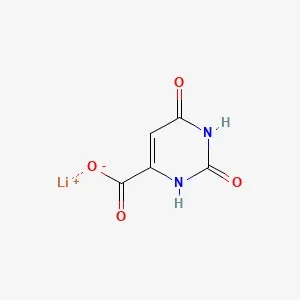
Food Additive Raw Materials & Intermediates
Lithium orotate
Lithium orotate is an organic lithium salt commonly incorporated into dietary supplements that support emotional balance and mental health. It is used in formulations aimed at stress management, mood regulation, and promoting overall psychological well-being. Due to its specific applications, it is found in nutraceutical products intended to aid mental clarity and emotional resilience.
- CAS No.: 5266-20-6
- Molecular Formula: C₅H₃LiN₂O₄
- Purity: 99% min

![Trans-4-[(tert-butoxycarbonyl)amino]cyclohexanecarboxylic acid](products/3-2-7-lithium-orotate_02.webp)
![Trans-4-[(tert-butoxycarbonyl)amino]cyclohexanecarboxylic acid](products/1-1-l-tyrosine_03.webp)
![Trans-4-[(tert-butoxycarbonyl)amino]cyclohexanecarboxylic acid](products/1-1-l-tyrosine_04.webp)




